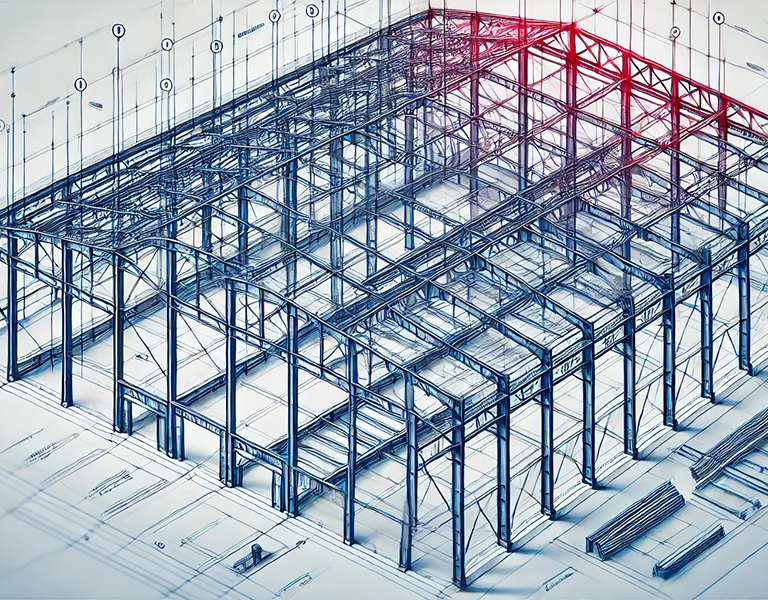
The steel structure industry uses a unique set of terms to describe its various components, processes, and design aspects. Understanding these terms is essential for anyone working with or interested in steel structures, from engineers and architects to project managers and clients. Here are some of the most important terms in steel structure engineering:
- Steel Frame
- A steel frame is the main structural framework of a building, made up of vertical and horizontal steel components. Steel frames provide the skeleton for the building, supporting floors, walls, and roofing.
- Pre-engineered Building (PEB)
- Pre-engineered buildings are constructed using standardized, pre-fabricated components, which reduce construction time and costs. PEBs are widely used for warehouses, factories, and other industrial buildings.
- Hot-Rolled vs. Cold-Formed Steel
- Hot-Rolled Steel is formed at high temperatures and is known for its strength, making it suitable for larger, heavier structures.
- Cold-Formed Steel is shaped at room temperature, resulting in a more lightweight product ideal for smaller components.
- Steel Beam
- A beam is a horizontal structural element that supports loads by resisting bending. Beams are crucial for distributing weight across a structure.
- Columns
- Columns are vertical structural elements that bear the weight of the structure and transfer it down to the foundation. In steel structures, columns are usually made of rolled steel sections.
- Truss
- A truss is a framework of steel beams arranged in triangles to support roofs, bridges, or towers. Trusses provide a lightweight yet strong structure.
- Welding and Bolting
Key Terms in Steel Structures
- Welding and bolting are the two main methods for joining steel components. Welding fuses the metal pieces together, while bolting uses mechanical fasteners, providing flexibility and ease of disassembly.
- Bracing
- Bracing refers to diagonal structural elements added to steel frames to resist lateral forces, such as wind and earthquakes, enhancing the building’s stability.
- Steel Decking
- Steel decking is used as a base for floors or roofs, creating a lightweight and durable surface that can support concrete slabs or roofing materials.
- Corrosion Protection
- Protecting steel from corrosion is essential in structure longevity. Common protection methods include galvanizing, painting, and applying protective coatings.
- Load-Bearing Capacity
- Load-bearing capacity defines the maximum load a structure or component can support. Engineers carefully calculate this to ensure safety and durability.
- Foundation
- The foundation is the base of any steel structure, distributing the load to the ground and ensuring stability. Foundations are typically made of concrete to provide a solid anchor for the steel columns.
- Span
- Span refers to the distance a beam or truss covers between two supports. Longer spans are often required in industrial and commercial buildings.
Understanding these terms will not only help in comprehending steel structure projects but also in effective communication with engineers, suppliers, and contractors. As the industry grows, familiarity with these fundamental terms will continue to be invaluable.